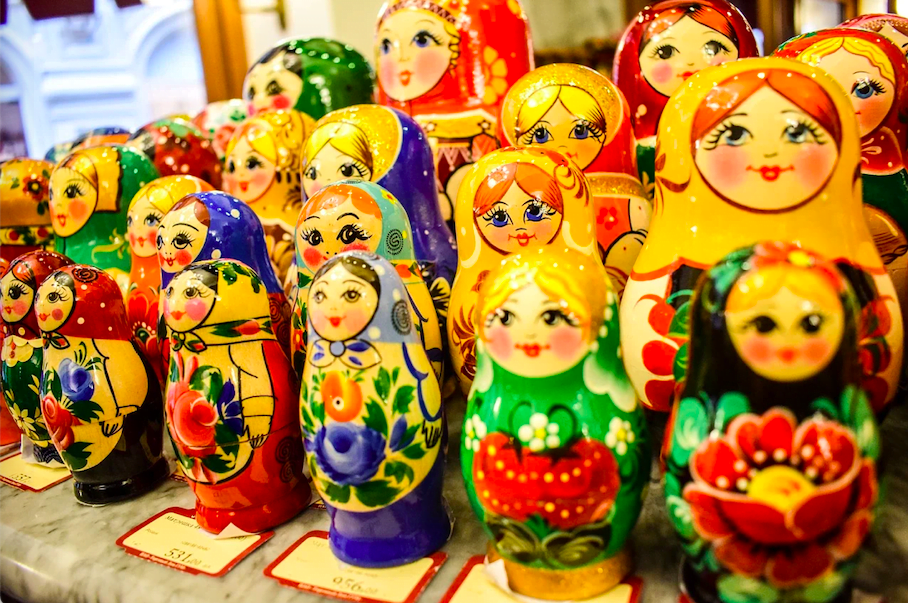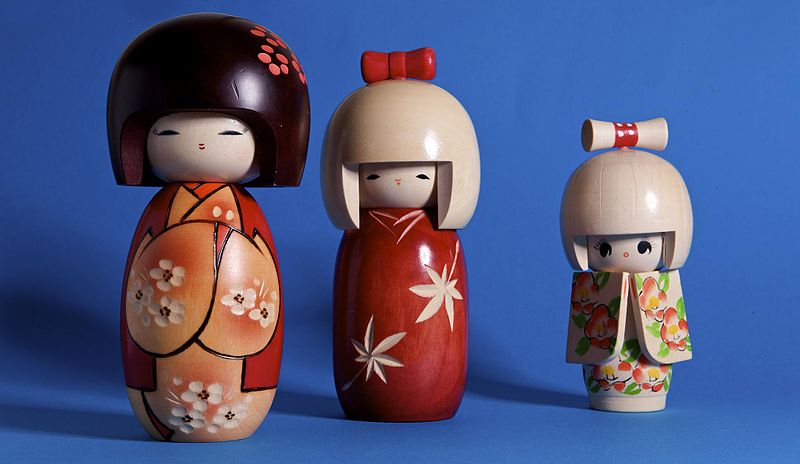Foreigners often bring painted wooden dolls nested inside one another from Russia as a traditional souvenir. At the same time, there is a version that the real homeland of the nesting doll is not Russia, but Japan. We decided to check where this toy was actually invented.
Websites report the Japanese roots of the Russian nesting doll museums folk crafts and tourism blogs, this version is being discussed on forums, thematic websites and in Media.
Archaeologists most often find toys made of stone, since this material is better preserved. So, toys were discovered in Khakassia, dating back to XXV–XVIII centuries BC e. At the same time, there is a wooden figurine in the collection of the British Museum cats, dating back to the era of the New Kingdom (1550–1069 BC). Toys were also made from clay, animal bones and horns, fabric, straw and metal.
One of the most ancient crafts in Russia - Dymkovskaya a toy that arose around the 15th century in the trans-river settlement of Dymkovo near Khlynov (modern Kirov). The figurines were made of clay, then fired, and then painted. Wooden toys produced in many regions of the country: in Arkhangelsk, Novgorod, Vologda, Vladimir, Nizhny Novgorod and Moscow provinces. Most often, horses and birds were made from wood, as well as simplified images of people. Products were either made from a whole piece of wood or from individual branches and chips. At the same time, researchers note, that among all the variety of folk crafts in traditional Russian culture there were no toys nested inside one another.
Historians suggestthat a painted wooden figurine from Japan came into the family of the merchant and philanthropist Savva Mamontov at the end of the 19th century. The artist Sergei Malyutin was inspired by it, created a sketch, and from this sketch the matryoshka was turned by turner Vasily Zvezdochkin. According to one of versions, the prototype toy was brought by Mamontov’s wife, Elizaveta Sapozhnikova-Mamontova, from a trip to Japan. However, if you study it carefully biography, then there is no mention of a trip to this country is discovered. According to another versions, it was brought by Savva Mamontov’s brother Anatoly, but documentary evidence of his trip to Japan also could not be found. Third version reads, that the doll could have been seen at the exhibition of Japanese art by the collector Kitaev, which took place in St. Petersburg in 1896. But this cannot be verified either.
Three different Japanese figures are called the prototype of the nesting doll: Fukuruma, Daruma and Kokeshi (Kokeshi).
Fukuruma, or Fukurokuju (福禄寿), - depicted as an old man with an elongated forehead, the deity of wealth, happiness and longevity, part of the Shichifukujin - the seven gods of happiness.

Daruma (達磨) - sage, meditation practitioner and founder of Zen Buddhism. According to legend, Daruma meditated for several years while looking at a wall and his legs became paralyzed, so the figurine depicting him also has no legs. But the sage had to sacrifice not only his legs - at some point he realized that he was no longer meditating, but falling asleep. Then Daruma cut off his eyelids, from which, according to legend, a plant important in Japanese culture sprouted - tea.
Kokeshi (小芥子) translates to "forgotten child" in Japanese. These figurines were probably funeral dolls and were carved in memory of dead or murdered daughters whom the peasant family could not feed in lean years. At the same time, there is no evidence anywhere that the figures of Kokeshi and Daruma were collapsible and inserted into one another.
But Fukuruma, by words historian, Japanese specialist and translator Alexander Meshcheryakov, was collapsible, the figures of the gods were nested one inside the other - however, he notes that the figure was brought by Mamontov’s wife. Also the version about Shichifukujin as a probable prototype of the matryoshka doll supports Svetlana Gorozhanina, head of the research and collection department “Russian folk and decorative arts of the 18th–21st centuries” of the Sergiev Posad Museum-Reserve. At the same time, the resources of the Ministry of Culture of the Russian Federation mention and another version: Sergei Malyutin could have been inspired by a craft from the Handicraft Museum, which stored handicrafts from different parts of the country. However, no data could be found to support this hypothesis.
Thus, the version about the Japanese origin of the nesting doll is extremely widespread, including in academic circles. However, since neither the artist Sergei Malyutin nor the turner Vasily Zvezdochkin left memoirs where they would tell what inspired them in the process of work, it is impossible to reliably determine the prototype of the Russian nesting doll.

This is not accurate
Read on the topic:
If you find a spelling or grammatical error, please let us know by highlighting the error text and clicking Ctrl+Enter.








